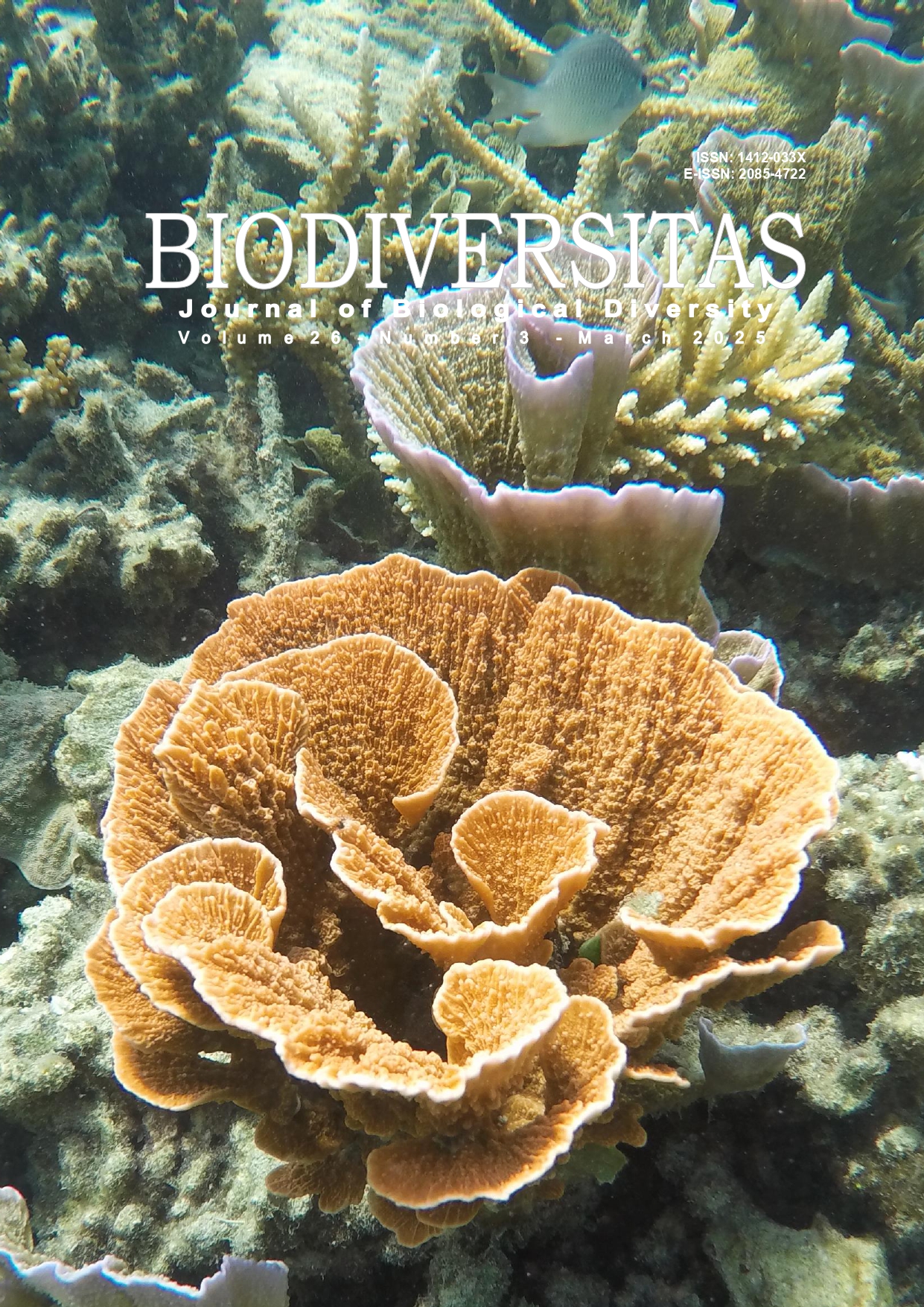Isolation and potential test of indigenous bacteria from Singolangu, Magetan, Indonesia for bioremediation of organophosphate compounds
##plugins.themes.bootstrap3.article.main##
Abstract
Abstract. Pujiati, Prasetyani YW, Ardhi MW, Fatimah, Ramadhan R, Ni’matuzahroh N. 2025. Isolation and potential test of indigenous bacteria from Singolangu, Magetan, Indonesia for bioremediation of organophosphate compounds. Biodiversitas 26: 1029-1038. The objective of this study was to isolate indigenous bacteria from soil contaminated with pesticide residues and assess their potential for bioremediation of organophosphate compounds, specifically from the profenofos and chlorpyrifos groups. The methodology employed was bacterial isolation, characterization, and ex-situ bioaugmentation testing with a design that included six treatments. The parameters observed included pH, N, P, K, profenofos, and chlorpyrifos pesticide residues. By the fourth week, the bioremediation results demonstrated the exceptional effectiveness of bacteria from the Pseudomonas genus, particularly isolate B3, which outperformed other isolates in terms of N, P, and K pH values, which were 90 ppm, 94 ppm, 175 ppm, and 6, respectively. The lowest N, P, K was isolate B1, with consecutive values of 47, 63, 129, and a pH value of 6. The control soil on pesticide residue levels in the chlorpyrifos test was 150 ppm, and profenofos was 29 ppm. In the results of soil testing with Pseudomonas bacteria (isolate B3), chlorpyrifos levels were reduced by 41 ppm to 109 ppm, and profenofos levels were reduced by 21.8 ppm to 7.2 ppm. Isolate B1 was able to reduce profenofos levels by 18 ppm to 132 ppm and decrease profenofos by 9.2 ppm to 18.8 ppm. The test results showed that the type of indigenous bacteria and the length of incubation time have an impact on soil quality and pesticide residue levels.

